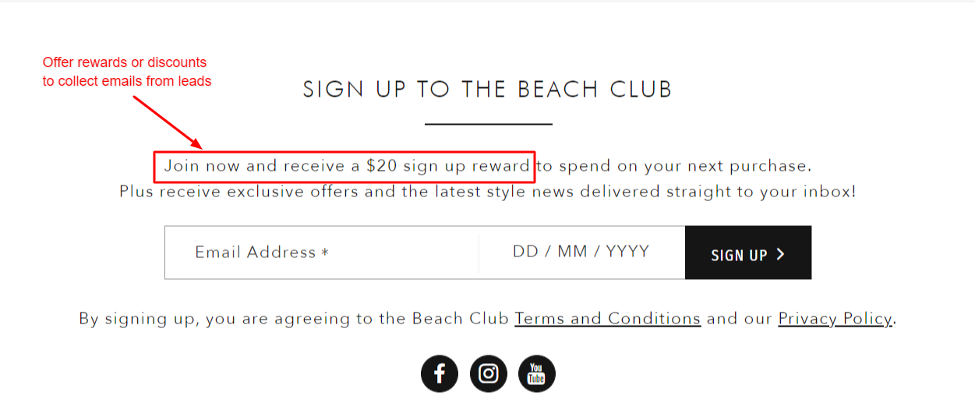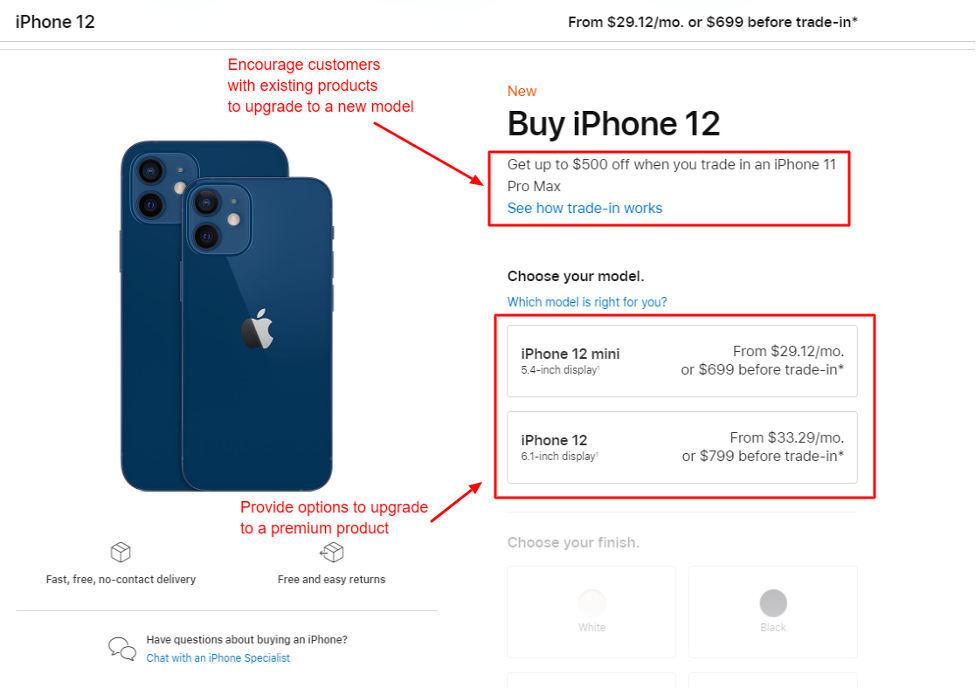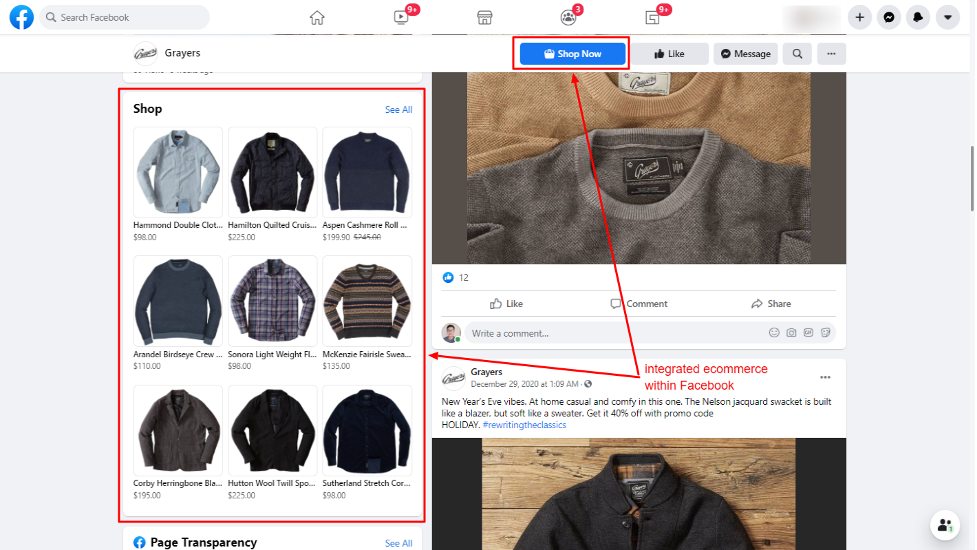
It takes more than just developing a professional-looking ecommerce store and having TONS of amazing products to generate sales.
You need tried and tested ecommerce marketing strategies, the likes of which can attract website traffic, generate engagements, and ultimately compel your web visitors to take out their credit cards.
If you’re struggling with the marketing aspect of running a successful ecommerce business, then you’re in the right place.
We’ll share with you six proven ecommerce marketing strategies you can use right now to get meaningful results out of your ecommerce business.
Table of Contents
1. Cultivate Your Customer Relationship Through Email
It has been 50 years since the first email was sent. And yet, email remains the king of electronic communication.
As such, it is still one of the most effective channels for capturing leads and developing a relationship with your customers.
According to a study by Forrester Research, around 17% of online marketing happens through email. But, it generates around 24% of a company’s overall revenue.
While Tweets, Facebook posts, and Instagram photos are the new methods of communicating with customers, email provides a more intimate interaction.
Start by actively growing your email list by promoting your newsletter, discounts, or content. This creates a pool of leads that will start off your email marketing campaign.

After capturing emails from leads, send regular emails that they will appreciate. Here are some examples:
- Rewards, discounts, and other promotions exclusive for email subscribers.
- A welcome email for first-time buyers.
- Product times, how-tos, and other useful content that features your products and services.
- Invitations to your company-hosted events such as virtual summits, webinars, podcasts, etc.
- A message of appreciation for the highest-value customers, especially those who regularly purchase from your website.
- Feedback forms to improve your service and your ecommerce portal.
- Announcement of a new line of products and services.
Crafting a compelling email marketing campaign is especially crucial when you are running an ecommerce subscription service.
Well-timed emails are usually the difference between a one-time buyer and a loyal customer.
2. Take Advantage of Upselling Opportunities
A customer’s journey does not stop after the first purchase. After all, it is much easier to market to existing customers than capture leads.
That means you should spend time upselling to your existing customers — even if you’re still starting your online store. Most of the time, customers are now aware that upgrades or premium versions of your product exist. Plus, besides growing your sales, upselling helps you build better buyer relationships and increase your customer lifetime value.
There are two points that you should carefully consider when upselling:
- Anticipate the price range of the customer.
- Ensure that the upsell justifies the additional costs.
It is imperative that your upsell is related to the original product that interests the customer. This increases the likelihood of an upgrade despite the higher price.
If the product does not come with “upgradeable” features, consider cross-selling related products or accessories.

3. Drive Engagement Through Social Media
Selling online is essentially telling a story using visual elements. Showcasing your products in various use cases attracts leads that have the same needs.
Instagram, Facebook, and Twitter are great platforms to connect with customers through photos and relevant posts.
Compelling photos, along with strategic hashtags, attracts audiences on social media. Scheduling posts at the right time will maximize your reach even further.
Increase engagement by running contests, providing seasonal discounts, and cultivating an approachable image by showing your product development’s behind-the-scenes.
Leverage video interviewing platforms to talk to influencers or experts in your niche about topics and content your followers and audiences are most interested in to drive engagement.
Social media platforms are also ecommerce marketplaces in their own right.
Set-up a Facebook store, so customers do not have to leave the platform when they want to purchase.
It removes an extra step in your sales funnels, so make the buying process much smoother.

Fortunately, you do not have to manually add products to Facebook stores. Ecommerce platforms such as Shopify integrates with social media portals in just a few clicks.
Additional tip: If you still have an undersized social following to promote your store to, consider buying influential social (e.g., Instagram) accounts from safe marketplaces such as Social Tradia. These venues allow you to transact privately, and the third-party accountability makes for greater security. By obtaining Instagram accounts with thousands of followers already, you can immediately market your ecommerce store to a massive audience and boost your sales opportunities.
4. Develop a Content Marketing Campaign
Marketing channels are not only limited to direct contacts with customers, such as email or social media.
Around 81% of people now search online when looking for a product or a service. That is why ranking on the first page of search engine results is valuable for any online business.
One way to improve your website’s ranking is through search engine optimization (SEO) using high-quality content.
Create content that provides information and value to your customers. Include relevant keywords that they are likely to use when searching.
For example, if you own a clothing store, consider publishing fashion-related content that features your products. Use keywords such as “fashion,” “women’s fashion,” or “latest fashion trends” within the post.
Blogging is not the only way to take advantage of content marketing. Here are other ideas:
- Write guest posts on other websites that include backlinks to your online store.
- Develop long-form content such as guides, how-to’s, and relevant information.
- Start a vlog or a podcast to build a community and share your expertise.
Tie-up your content marketing campaign with your other initiatives for a more streamlined approach.
For instance, share your blog posts through social media. Or include your guides in your email campaigns.
The more customers visit your website, the more it ranks better in search engines.
However, seeing favorable results from your SEO campaign takes time, continuous effort, and the right strategies. If you’re still a beginner or you’d like to improve your content’s SEO performance, you can get help from guides and experts such as Paul Teitelman. His industry know-how and services (such as link building, on-page optimization, etc.) can give the needed SEO boost for your content marketing activities.
5. Take Advantage of Local Marketing Campaigns
Even if you do not have a physical store, you can launch marketing campaigns that focus on local demographics.
Identify where you have large concentrations of customers. Additionally, include other demographic factors such as age, gender, and interests.
For example, if you are a clothing store that specializes in trendy fashion, target localities with younger populations such as college towns.
Spend time researching local spending habits and other behavioral indicators. Consider local events, tie-ups with local businesses, and even local pop-up stores.
The location of your warehouses is also an excellent starting point for local marketing campaigns.
Offer promotions such as free shipping, expedited deliveries, and discounts for customers within the vicinity of your warehouses.
Aside from promoting your sales, it is much easier for your operations team to implement without the extra overhead costs.
Bonus tip: Get all your marketing resources, materials, and content in one place and streamline implementing your campaigns by adding content marketing software to your marketing tech stack.
Doing so helps speed up your marketing content creation and related processes, making your workflows more efficient so you can churn out more content and run campaigns more seamlessly.
6. Implement Brand Marketing on Your Mobile Business App
Did you know that, for almost six out of 10 buyers, the ability to shop on mobile gadgets is a deciding factor for choosing which retailer to buy from?
It’s true — which is why, creating an app to introduce and market your ecommerce brand is strategic for skyrocketing your sales.
You can leverage your own business app to showcase your brand, story, and products, elevate customers’ shopping experiences, and foster loyalty to your store. You can also easily promote sales offers such as coupons, discounts, and more.
Showcase your brand on the app by displaying the elements of your identity consistently across your app and other channels. This includes colors, font and image styles, your logo, and others.
You must also have an attractive app design, intuitive interface, and seamless navigation system. The app’s appearance should beautifully reflect who you are, and its functionality must exhibit how you want customers to feel when shopping in your app. Having smooth and quick transitions from one page to another best demonstrates your excellence and worthiness of being chosen by buyers.
Mobile consumers also value security in choosing online retailers, so you must protect the customer data gathered by your app, along with its code. For example, if you built the app on Microsoft Azure DevOps, it can be at risk of system failure, accidental deletions, ransomware, etc.
To protect your app’s code, execute frequent and automated Azure DevOps backups. This will guarantee the code’s security and relieve you of the burdens of manual backups. You can also concentrate more on implementing your brand marketing strategies.
Upgrading Your Ecommerce Marketing Strategy
Reaching customers through social media, email, and search engines using content and localized marketing initiatives does not need separate campaigns.
These tips can be streamlined into one marketing campaign. For example, identify your email subscribers’ localities and launch promotions for locations with large numbers of customers.
Additionally, increase the traffic on your website by posting links to your content on social media platforms. An attractive photo, along with a compelling caption, will surely capture an audience to your website.